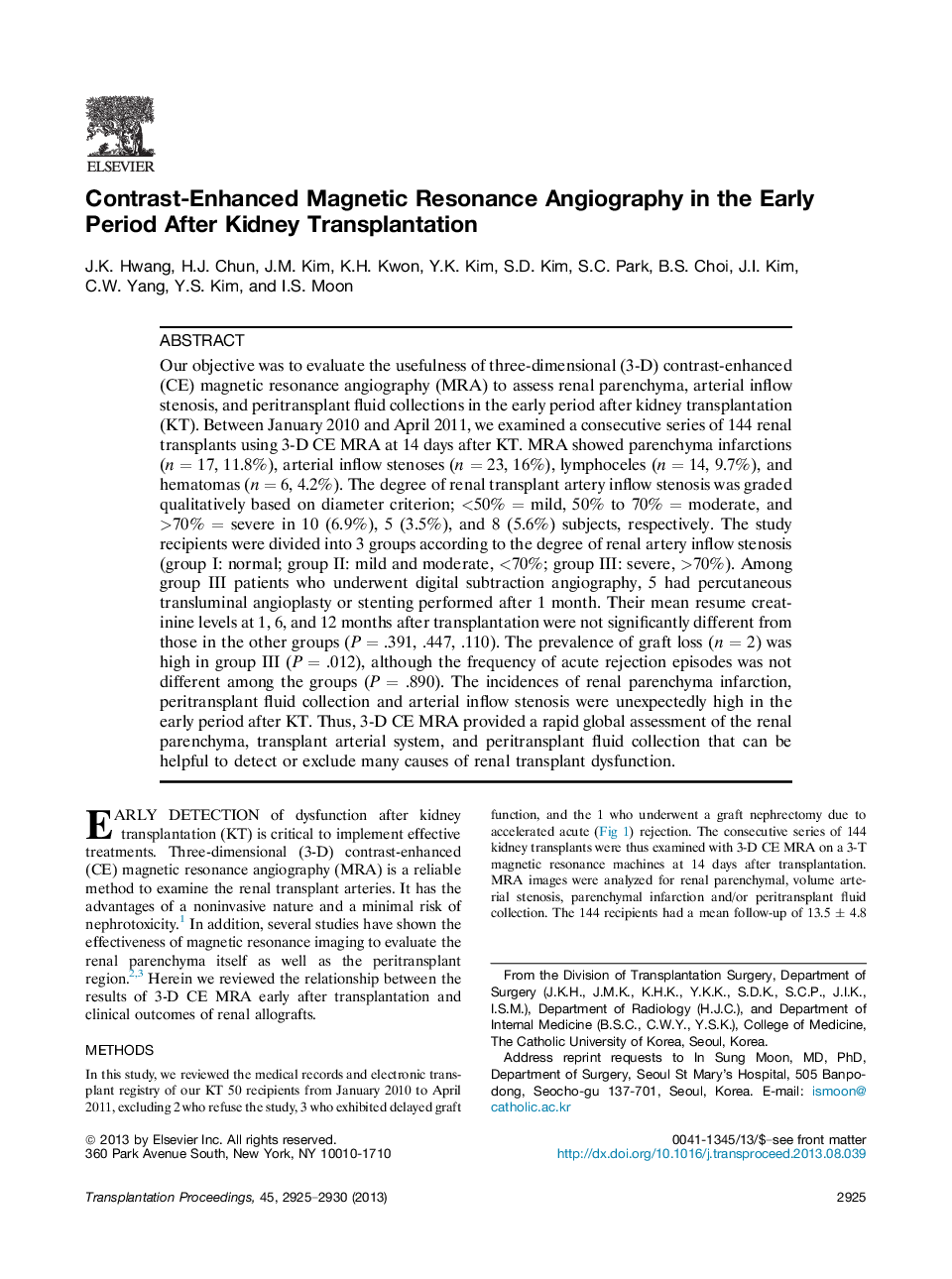| کد مقاله | کد نشریه | سال انتشار | مقاله انگلیسی | نسخه تمام متن |
|---|---|---|---|---|
| 6249898 | 1284572 | 2013 | 6 صفحه PDF | دانلود رایگان |
Our objective was to evaluate the usefulness of three-dimensional (3-D) contrast-enhanced (CE) magnetic resonance angiography (MRA) to assess renal parenchyma, arterial inflow stenosis, and peritransplant fluid collections in the early period after kidney transplantation (KT). Between January 2010 and April 2011, we examined a consecutive series of 144 renal transplants using 3-D CE MRA at 14 days after KT. MRA showed parenchyma infarctions (n = 17, 11.8%), arterial inflow stenoses (n = 23, 16%), lymphoceles (n = 14, 9.7%), and hematomas (n = 6, 4.2%). The degree of renal transplant artery inflow stenosis was graded qualitatively based on diameter criterion; <50% = mild, 50% to 70% = moderate, and >70% = severe in 10 (6.9%), 5 (3.5%), and 8 (5.6%) subjects, respectively. The study recipients were divided into 3 groups according to the degree of renal artery inflow stenosis (group I: normal; group II: mild and moderate, <70%; group III: severe, >70%). Among group III patients who underwent digital subtraction angiography, 5 had percutaneous transluminal angioplasty or stenting performed after 1 month. Their mean resume creatinine levels at 1, 6, and 12 months after transplantation were not significantly different from those in the other groups (P = .391, .447, .110). The prevalence of graft loss (n = 2) was high in group III (P = .012), although the frequency of acute rejection episodes was not different among the groups (P = .890). The incidences of renal parenchyma infarction, peritransplant fluid collection and arterial inflow stenosis were unexpectedly high in the early period after KT. Thus, 3-D CE MRA provided a rapid global assessment of the renal parenchyma, transplant arterial system, and peritransplant fluid collection that can be helpful to detect or exclude many causes of renal transplant dysfunction.
Journal: Transplantation Proceedings - Volume 45, Issue 8, October 2013, Pages 2925-2930
